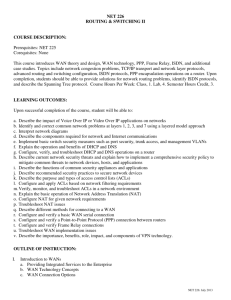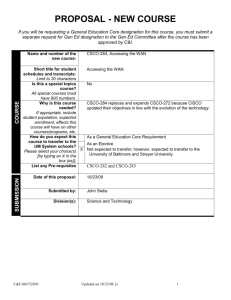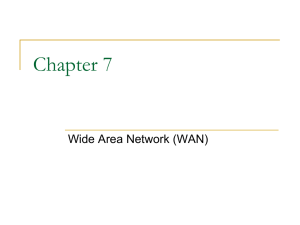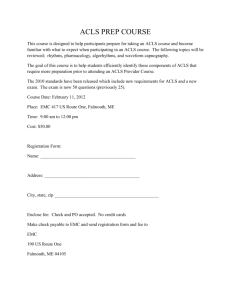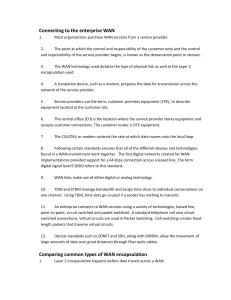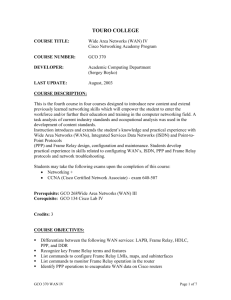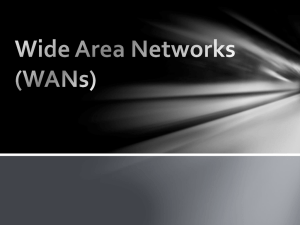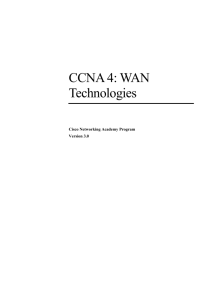ITN 157
advertisement
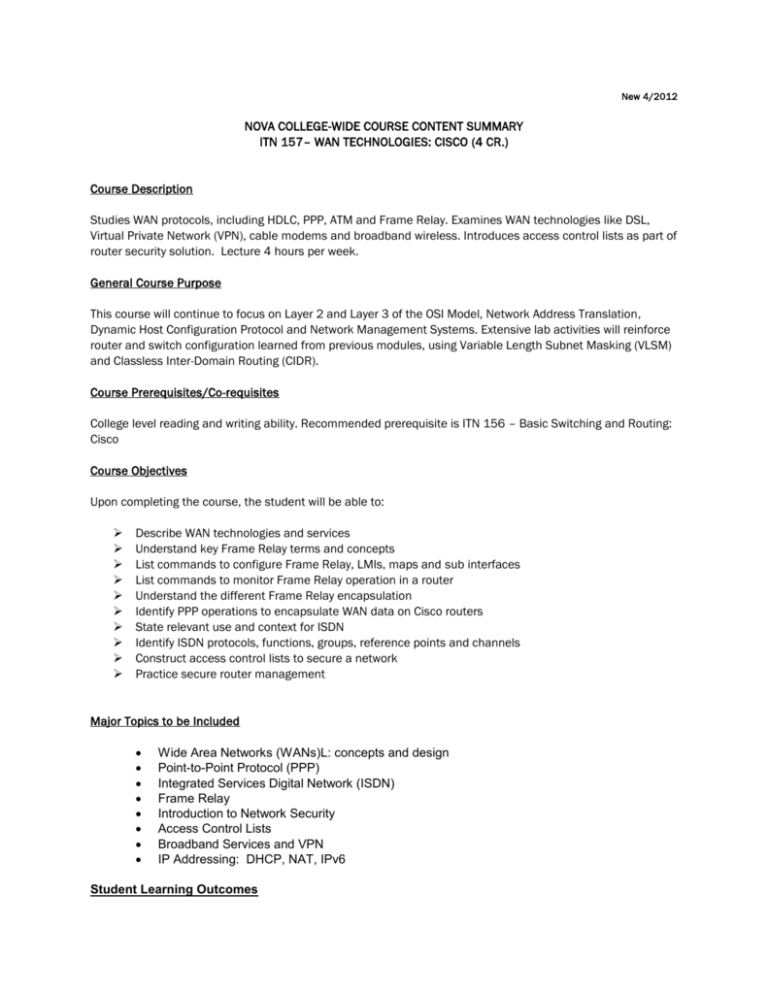
New 4/2012 NOVA COLLEGE-WIDE COURSE CONTENT SUMMARY ITN 157– WAN TECHNOLOGIES: CISCO (4 CR.) Course Description Studies WAN protocols, including HDLC, PPP, ATM and Frame Relay. Examines WAN technologies like DSL, Virtual Private Network (VPN), cable modems and broadband wireless. Introduces access control lists as part of router security solution. Lecture 4 hours per week. General Course Purpose This course will continue to focus on Layer 2 and Layer 3 of the OSI Model, Network Address Translation, Dynamic Host Configuration Protocol and Network Management Systems. Extensive lab activities will reinforce router and switch configuration learned from previous modules, using Variable Length Subnet Masking (VLSM) and Classless Inter-Domain Routing (CIDR). Course Prerequisites/Co-requisites College level reading and writing ability. Recommended prerequisite is ITN 156 – Basic Switching and Routing: Cisco Course Objectives Upon completing the course, the student will be able to: Describe WAN technologies and services Understand key Frame Relay terms and concepts List commands to configure Frame Relay, LMIs, maps and sub interfaces List commands to monitor Frame Relay operation in a router Understand the different Frame Relay encapsulation Identify PPP operations to encapsulate WAN data on Cisco routers State relevant use and context for ISDN Identify ISDN protocols, functions, groups, reference points and channels Construct access control lists to secure a network Practice secure router management Major Topics to be Included Wide Area Networks (WANs)L: concepts and design Point-to-Point Protocol (PPP) Integrated Services Digital Network (ISDN) Frame Relay Introduction to Network Security Access Control Lists Broadband Services and VPN IP Addressing: DHCP, NAT, IPv6 Student Learning Outcomes WAN Design Identify and describe WAN switching categories o Packet switching: Frame Relay, ATM o Circuit switching: Analog, ISDN Define Virtual circuits Name the different WAN connections o Leased line o Circuit switching o Packet switching o Cell relay o Internet Point-to-Point (PPP) Define the proprietary [Cisco] High-level Data Link Control (HDLC) encapsulation Configure HDLC on an interface Compare HDLC with Point-to-Point encapsulation (PPP, non-proprietary) Understand a PPP session Enable PPP on an interface Use authentication protocol with PPP o Password Authentication protocol (PAP) o Challenge Handshake Authentication Protocol (CHAP) Frame Relay Identify and describe basic WAN components: o Data Communications Equipment (DCE) o Data Terminal Unit (DTE) o Frame Relay backbone Describe a virtual circuit o Switched virtual circuit (SVC) o Permanent virtual circuit (PVC) Match virtual circuits with Data Link Connection Identifier (DLCIs) Configure Frame Relay, virtual circuits and Local Management Interface (LMI) o Address mapping o Subinterfaces: point-to-point, multipoint Network Security List and describe the types of network attacks Understand the importance of a security policy in protecting network assets Identify major categories of security threats Enumerate and describe the different techniques to mitigate network attacks Configure router security Access Control Lists Understand the role of access control lists (ACLs) in securing a network Identify the types of Cisco ACLs o Standard ACLs o Extended ACLs Numbered ACLs Named ACLs o Dynamic ACLs o Complex ACLs Configure ACLs and apply them to router interfaces Teleworking in an Enterprise Network Understand how broadband services support teleworking Describe how teleworkers connect to the WAN o Dial-up access o DSL o Cable modem o Wireless o Satellite Understand and describe how VPN supports secure private networks over the Internet IP Addressing Services Identify some solutions to shortage of IP addresses o Dynamic Host Configuration Protocol (DHCP) o Network Address Translation (NAT) o IPv6 Configure dynamic and static NAT Configure IPb6 addresses
